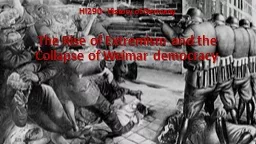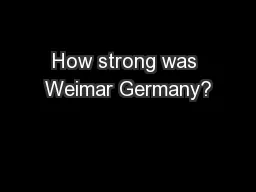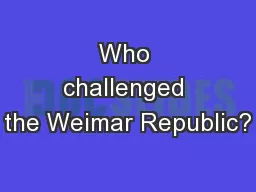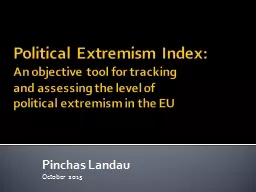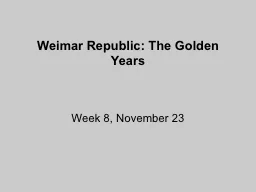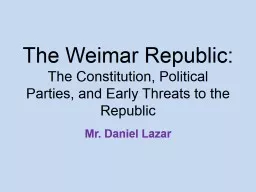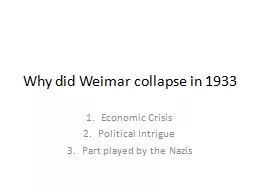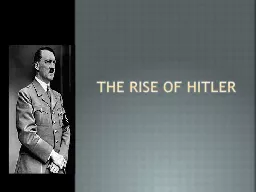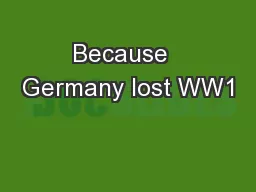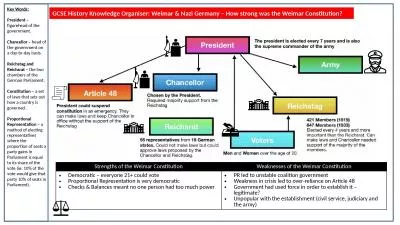PPT-The Rise of Extremism and the Collapse of Weimar democracy
Author : min-jolicoeur | Published Date : 2016-09-17
HI290 History of Germany The Presidential Election of 1925 Hindenburg as president of the Republic as painted by Max Leibermann 1927 The Great Depression German
Presentation Embed Code
Download Presentation
Download Presentation The PPT/PDF document "The Rise of Extremism and the Collapse o..." is the property of its rightful owner. Permission is granted to download and print the materials on this website for personal, non-commercial use only, and to display it on your personal computer provided you do not modify the materials and that you retain all copyright notices contained in the materials. By downloading content from our website, you accept the terms of this agreement.
The Rise of Extremism and the Collapse of Weimar democracy: Transcript
Download Rules Of Document
"The Rise of Extremism and the Collapse of Weimar democracy"The content belongs to its owner. You may download and print it for personal use, without modification, and keep all copyright notices. By downloading, you agree to these terms.
Related Documents

